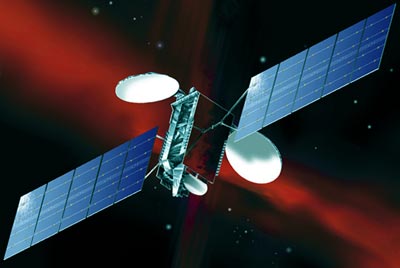It has been revealed that the old EchoStar 3 communications satellite, having spent nearly 20 years in-orbit (seven years beyond its design life) has suffered an unknown anomaly during an orbital move from 61.8 degrees West to 86.86 degrees West. The anomaly occurred during the last week of July and has affected the TT&C (Telemetry, Tracking & Command) systems on-board the spacecraft. As a result the spacecraft became unresponsive to ground commands and drifted west along the geostationary arc at a rate of 0.1 degrees/day.
EchoStar is confident that the communications payload remains inactive and will not interfere with other operators. Additionally, owing to its previously inclined position, Echostar 3 is, in fact, 10-12 km above the average orbit in the geostationary arc, potentially reducing the chances of any third-party contact.
Update 04/08/2017: Analytical Graphics Inc (AGI) of Pennsylvania, USA, providers of the STK modelling kit, notified the Bolivian Space Agency (ABE) on 29 July that its Tupac Katari satellite was potentially in danger from the still drifting spacecraft. In the first two days of August, Echostar 3 entered the 87 degrees West and 87.2 degrees West orbital boxes occupied by SES-2 and TUPAC KATARI respectively.
European FSS operator SES was automatically informed about the potentially dangerous Echostar 3 drift due to its membership of the Space Data Association (SDA). However, as ABE is not an SDA member, it was not privy to the shared SDA data. After this close call, it is reportedly considering membership. If EchoStar 3’s drift continues and it may threaten Galaxy 28 at 89 degrees West.







